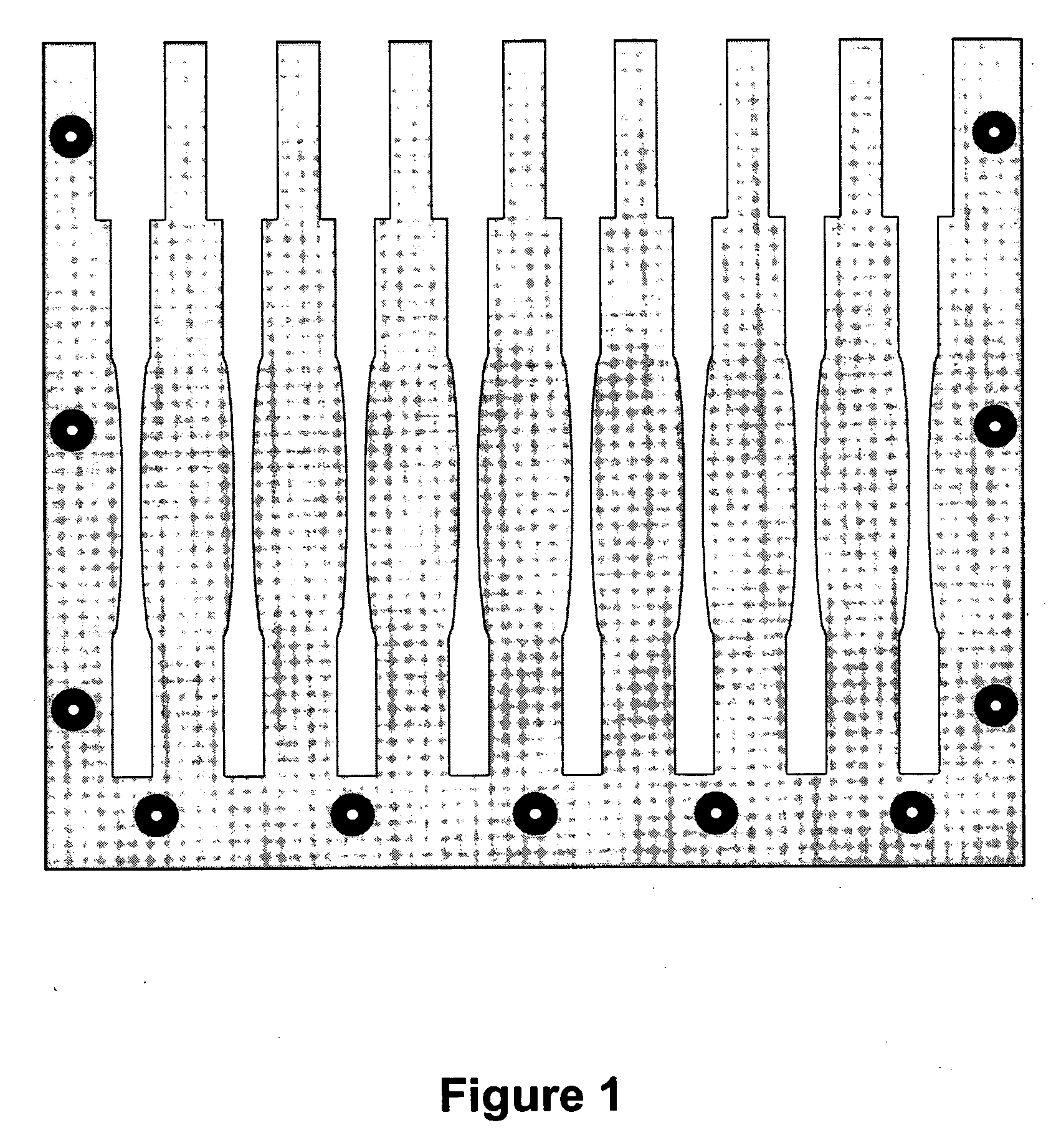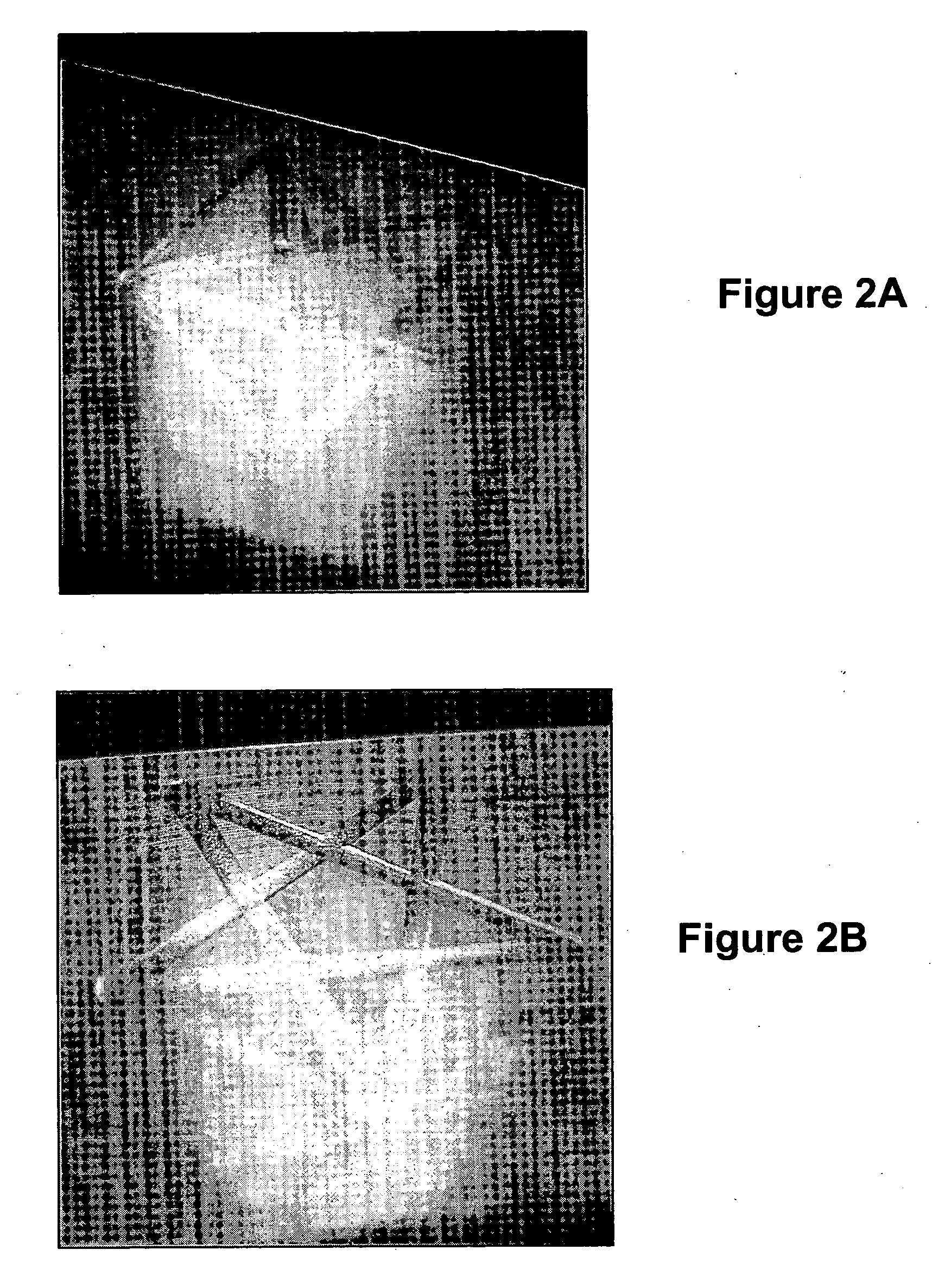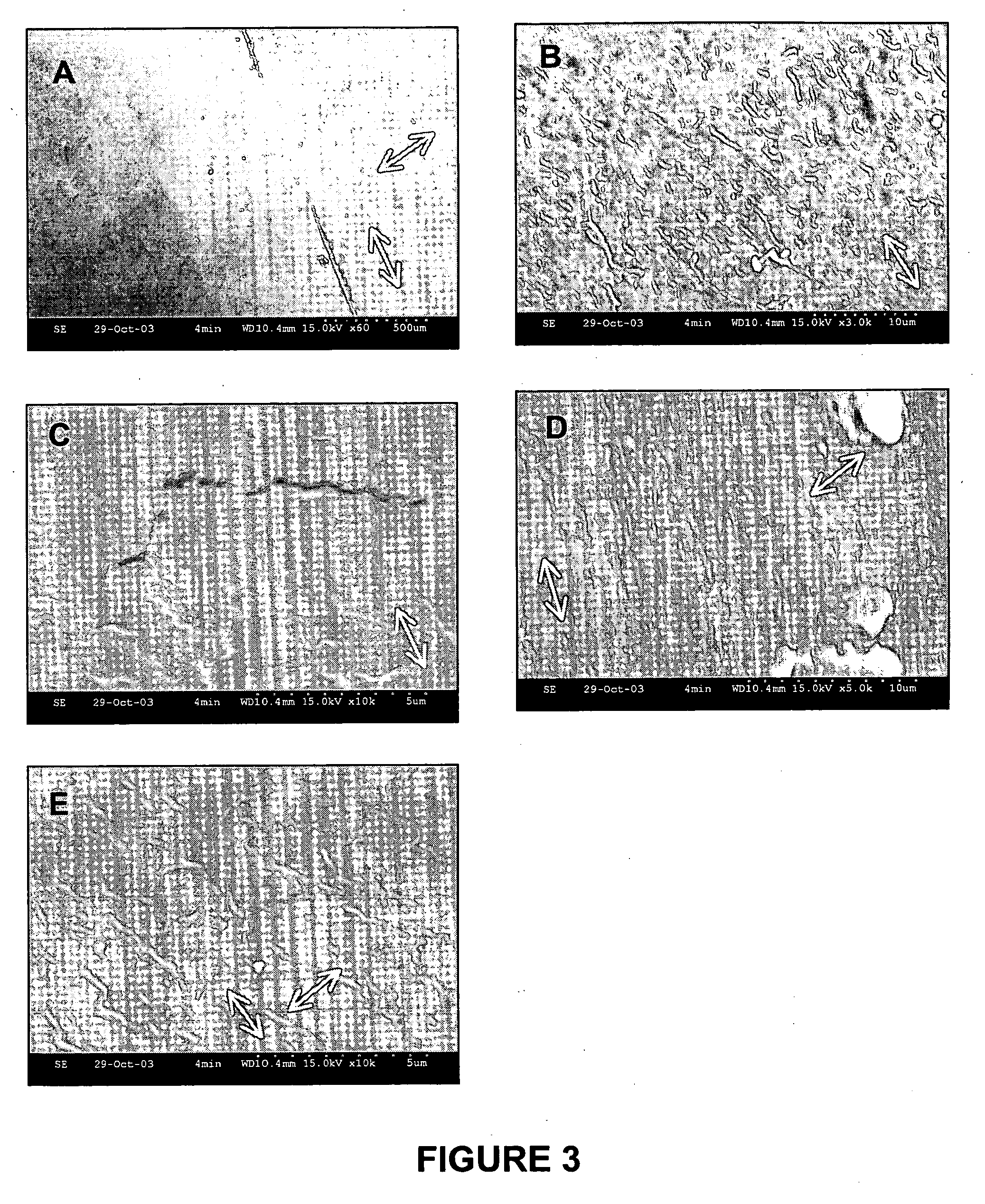Implantable biomedical devices including biocompatible polyurethanes
a biocompatible, biocompatible technology, applied in the field of polyurethanes and polyureas, can solve the problems of low fatigue strength of uhmwpe materials, low shock absorption capacity, osteolysis and bone loss in implant recipients, etc., to achieve the effect of improving the strength, rigidity and toughness of polyurethanes
- Summary
- Abstract
- Description
- Claims
- Application Information
AI Technical Summary
Benefits of technology
Problems solved by technology
Method used
Image
Examples
example 1
Polymer Synthesis
[0087] Polyurethanes were synthesized in a two-step reaction; the first step consisting of the di-isocyanate (DI)—diol reaction, and the second consisting of the isocyanate terminated diol (referred to as prepolymer)—curative reaction, in which a functional filler was also added in some formulations. Reagents used, sources of reagents, and annotations used in the example section are summarized below in Table 1.
TABLE 1Reagent TypeChemical or Trade NameAnnotationDi-isocyanateToluene di-isocyanatesTDI4,4′-methylene bis(phenylMDIisocyanate)DiolPoly (ether) diol; obtainedTBIas TDI terminated prepolymer(available from T-G MedicalInc., Burlington, ON, Canada)Aliphatic poly (carbonate)PC-1667diol; PC-1667 (availablefrom Stahl, USA of Peabody,MA)Aliphatic poly (carbonate)PC-1733diol; PC-1733 (availablefrom Stahl, USA)C36 Dicarboxylic Dimer Diol;Pripol 2033Pripol ® 2033 (availablefrom Uniquema, of Newcastle,DE)Chain ExtenderTrimethylene glycol di-p-VLaminobenzoate; Versal...
example 2
[0097] Prior to testing, four measurements of the width and thickness of the gauge length of each dumbbell shaped specimen were taken with a digital micrometer and recorded. Testing was performed at ambient room temperature using an Instron servohydraulic-testing machine (Model 8874, Instron Corp, Canton, Mass.) equipped with a 5 KN load cell. The ends of the specimens were gripped by servohydraulic grips; preliminary tests indicated a grip pressure of 20-30 bar to be optimal. Instron Fast Track, Version 3.4 (Instron Corp, Canton, Mass.) interface software controlled testing while output was recorded using Instron Max 32, Version 6.3 (Instron Corp, Canton, Mass.) software. Uniaxial tension tests were performed on at least 4 specimens of each formulation; different batches of the same formulation were also tested to investigate batch-to-batch variability. For each specimen, calculations were performed on selected subsets of data representing the maximum linear portion of the stress / s...
example 3
[0099] A polyurethane formulation based on TDI / PC1733 / VL was prepared with either 6.8% NCO (w / w) or 7.2% NCO (w / w) in the prepolymer. The prepolymer formulations were then mixed with various amounts of the solid functional filler (i.e., 0%, 2.5%, 6.0%, or 10% (w / w) before final polymerization with the VL chain extender / curative. Average elastic moduli, % elongation, energy at break and tensile strength at yield for samples tested are given in Table 4. Samples had dimensions of ASTM D638 Type-I and were tested at strain rate of 50 mm / sec on an Instron testing machine (4500) and tensile yield strengths were calculated by the Instron software, version 1.11 .Table 4.
TABLE 42%Modulus of%EnergyYieldElasticityStd.Elong.Std.at BreakStd.StrengthStd.(MPa)Dev.(%)Dev.(J)Dev.(Mpa)Dev.6.8 NCO_0%20519.647627.045036.715.91.16.8 NCO_2.5%1869.021711315697.514.60.46.8 NCO_6%2842.036211834914219.70.26.8 NCO_10%22320.028896.422297.816.10.87.2 NCO_0%29653.744771.452399.724.01.27.2 NCO_2.5%2869.652155.5...
PUM
| Property | Measurement | Unit |
|---|---|---|
| temperatures | aaaaa | aaaaa |
| temperature | aaaaa | aaaaa |
| temperature | aaaaa | aaaaa |
Abstract
Description
Claims
Application Information
 Login to View More
Login to View More - R&D
- Intellectual Property
- Life Sciences
- Materials
- Tech Scout
- Unparalleled Data Quality
- Higher Quality Content
- 60% Fewer Hallucinations
Browse by: Latest US Patents, China's latest patents, Technical Efficacy Thesaurus, Application Domain, Technology Topic, Popular Technical Reports.
© 2025 PatSnap. All rights reserved.Legal|Privacy policy|Modern Slavery Act Transparency Statement|Sitemap|About US| Contact US: help@patsnap.com



